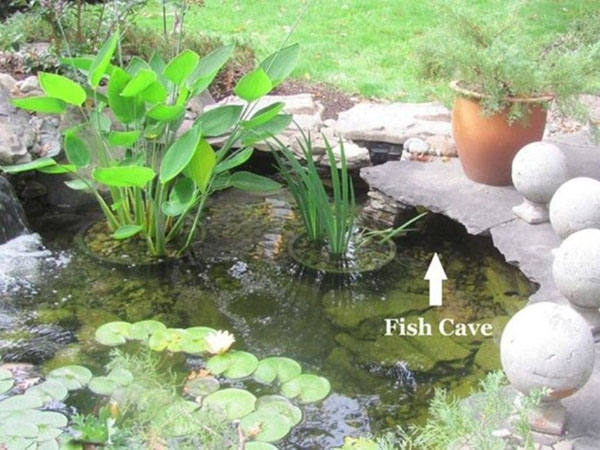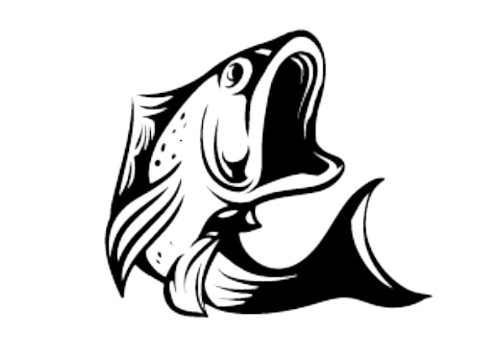How to Protect Koi Fish from Predators?

To protect koi fish from predators, use physical barriers such as nets or fences around the pond area.
Additionally, create hiding spots and shelters for the fish, such as rocks or plants, to prevent them from being easily seen by predators.
Regularly check the pond for any signs of predators and take immediate action if necessary to deter them.
Proper maintenance of the pond, including keeping the water clean and well-aerated, can also help to deter predators.

Credit: iowawaterscapes.com
Why Koi Fish Are Vulnerable To Predators?
Koi fish possess unique characteristics that make them vulnerable to predators. Their bright colors and large size make them attractive targets.
Predatory threats faced by these fish include birds, raccoons, and even larger fish. These predators can have a devastating impact on the koi fish population, causing a decline in numbers.
To protect koi fish from predators, it is important to create a secure environment, such as adding netting or fencing around ponds. Additionally, introducing frog or turtle companions can help deter predators.
Regular maintenance, including trimming plants and providing hiding spots, can also make the pond less attractive to potential predators.
By taking these precautions, koi fish can be safeguarded from the threat of predation and their population can thrive.
Securing The Pond Environment
Koi fish are beloved by many, but they are also vulnerable to predation. To protect these beautiful creatures, securing the pond environment is essential.
One way to achieve this is by designing a predator-proof pond layout.
This involves creating a natural barrier around the pond, such as using rocks or plants that are too difficult for predators to navigate.
Another effective method is installing physical deterrents, such as netting or fences, to prevent predators from accessing the pond.
By implementing these measures, koi fish can thrive in a safe and protected environment.
So, whether you’re a seasoned koi enthusiast or a beginner, take these steps to safeguard your beloved pets from potential predators.
Keeping their habitat secure will ensure that your koi fish can swim happily and thrive for years to come.
Natural Predators And Prevention Methods
Koi fish are often targeted by predators, and it’s crucial to take precautions to protect them. Identifying common predators is the first step.
Some of these include herons, raccoons, and cats. To minimize predator attraction to the pond, it’s important to remove any potential food sources, such as fallen fruits or insects.
Installing barriers like nets or fences can also be effective. Another strategy is to use decoy fish, which can divert the attention of predators away from the actual koi.
Additionally, deploying predator-specific deterrents can help. For example, motion-activated sprinklers or ultrasonic devices can startle and discourage predators.
By being proactive and implementing these preventive measures, you can keep your koi fish safe from potential threats.
Electronic And Technological Solutions
Electronic and technological solutions play a vital role in protecting koi fish from predators. Motion-activated deterrents are a practical option to consider, as they help ward off potential threats.
Underwater surveillance systems can be implemented to keep an eye on the area and alert homeowners of any suspicious activity.
Additionally, sound and light repellents can be incorporated to deter predators by creating a hostile environment.
These solutions work by emitting loud noises or bright lights when triggered, scaring away potential predators.
By utilizing these electronic and technological innovations, koi fish enthusiasts can safeguard their beloved pets from harm and ensure their safety.
Maintaining Optimal Water Conditions
Maintaining optimal water conditions is crucial to protect koi fish from predators. Regular water quality tests are essential for a healthy pond ecosystem.
By enhancing fish health, their vulnerability to predators can be minimized. It is important to monitor water parameters such as ph, ammonia, and nitrate levels.
Implementing appropriate filtration systems and maintaining proper water circulation helps prevent stagnation and promotes a healthy environment for the fish.
Additionally, the presence of aquatic plants and a balanced fish population can create natural hiding spots and reduce the risk of predation.
Observing the behavior of the koi fish regularly can also provide insights into their well-being and any potential threats they may face.
Taking necessary measures to maintain optimal water conditions is crucial for ensuring the safety and well-being of koi fish.
Improving Pond Surroundings
Maintaining proper vegetation and landscaping around your pond can significantly improve the safety of your koi fish.
By creating hiding spots with dense plants and rocks, you can provide your fish with a safe haven from potential predators.
Adding aquatic plants like water lilies and water hyacinths also helps to shield the koi from sight, making them less vulnerable.
Additionally, regularly trimming any overgrown vegetation around the pond eliminates hiding places for predators.
Remember to remove any potential shelter for predators, such as dead branches or decaying leaves, as they can attract unwanted visitors.
By carefully attending to your pond surroundings, you can ensure the protection and well-being of your cherished koi fish.
Educating Pond Owners
Educating pond owners about the predator-species relationship is crucial. Awareness of these dynamics helps in protecting koi fish from predators.
One effective way is implementing appropriate feeding practices.
A well-fed pond creates a less appealing environment for predatory species. Additionally, responsible pond management plays a significant role in safeguarding koi fish.
Regular maintenance, such as removing excess vegetation and debris, reduces hiding spots for predators.
Furthermore, maintaining a balanced ecosystem with appropriate plant life helps deter potential threats.
By educating pond owners about these key aspects, we can ensure the safety and well-being of koi fish in their habitats.
Frequently Asked Questions
What Is Eating My Koi At Night?
At night, your koi may be eaten by predators such as raccoons, herons, or even other fish. These predators are attracted to the movement and sound of the fish.
To protect your koi, you can install measures like netting or placing objects in the pond to create hiding places.
Additionally, adding underwater lights or noise deterrents can help scare away predators. It’s important to regularly check the netting for any holes or tears and make sure it is securely fastened.
Providing a proper habitat and maintenance for your koi can also help minimize the risk of predation.
By keeping the pond clean and well-maintained, you can reduce the chances of attracting these predators and ensure the safety of your koi at night.
How Do I Keep Predators Out Of My Fish Pond?
To keep predators out of your fish pond, follow these tips:
- Install a sturdy fence around the pond, ensuring it is at least 3 feet high and buried underground to prevent digging.
- Use netting or covers to shield the pond’s surface, securing them tightly to prevent predators from reaching the fish.
- Create hiding spots for your fish by adding plants or structures like rocks and caves. They provide protection and reduce visibility to predators.
- Install motion-activated lights or sprinklers near the pond. These deterrents startle and scare away predators.
- Keep the pond clean and well-maintained. A debris-free environment reduces the attraction for predators.
- Introduce fish species like koi that are known to be more predator-resistant.
- Regularly inspect the pond and its surroundings for potential entry points and take immediate action to seal them.
By implementing these strategies, you can create a safer environment for your fish and keep predators at bay.
How Do I Protect My Koi From Raccoons?
To protect your koi from raccoons, take these four steps:
- Secure your pond with a sturdy net or cover to prevent raccoons from reaching the fish.
- Install motion-activated lights or sprinklers near the pond to scare away raccoons.
- Around the pond, trim any overhanging branches or shrubs that raccoons could use to access the fish.
- Avoid leaving food or garbage near the pond, as this can attract raccoons. Regularly check the pond for any potential entry points that might have been missed.
By following these tips, you can effectively protect your koi from raccoon attacks.
What Keeps Eating My Koi?
Kois can be eaten by predators like herons, raccoons, and cats. Ensure your pond is secure and install netting to protect your koi from birds.
Additionally, consider keeping some fish shelters or hiding spots for your koi to retreat.
Be cautious of leaving your koi outside during the night as raccoons are nocturnal and will hunt for food during this time.
Maintaining a clean pond will also help deter predators as they tend to be attracted to dirty water.
Conclusion
Protecting koi fish from predators is essential to ensure their safety and well-being. By implementing the right strategies, such as providing adequate shelter, installing a net or fence, and maintaining a healthy ecosystem, you can create a safe environment for your koi.
Regularly inspecting and repairing any damages to the pond or netting can help minimize the risk of predators gaining access.
Additionally, introducing predator deterrents like scarecrows or motion-activated devices can further discourage unwanted visitors.
Remember to keep the water clean and well-maintained, as this will not only enhance the overall health of your koi but also discourage predators from approaching.
Also Read:
